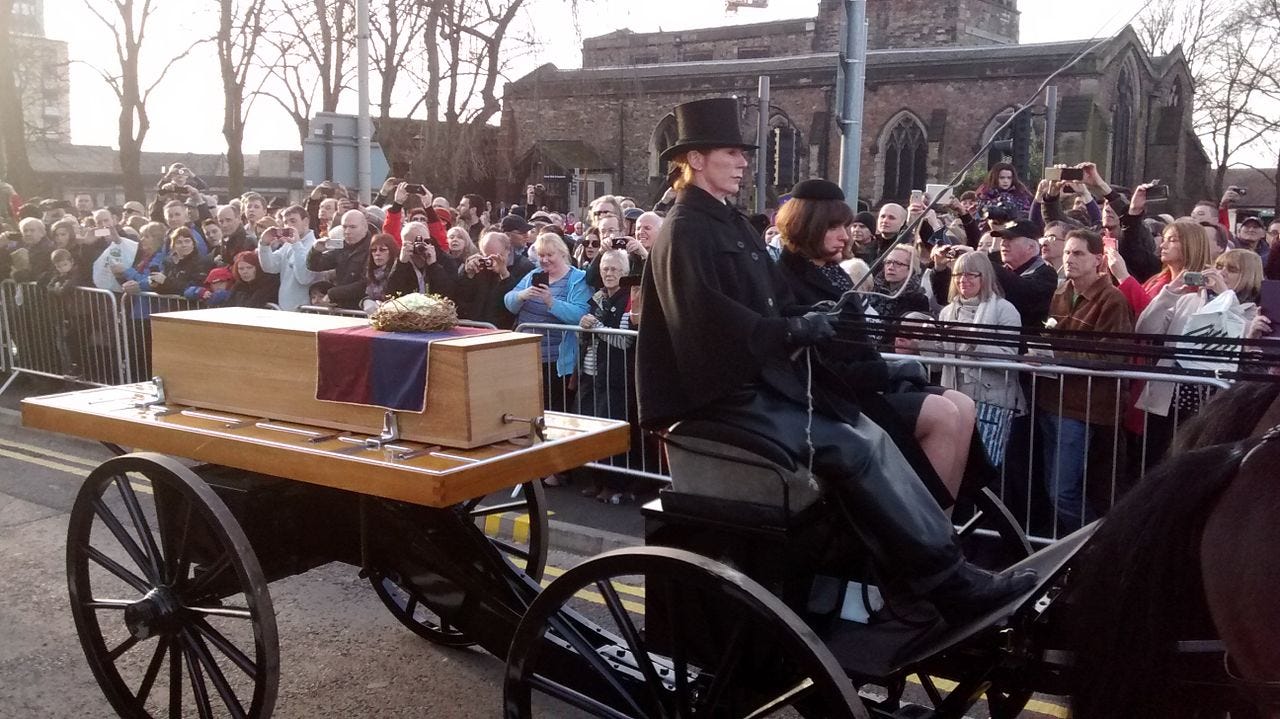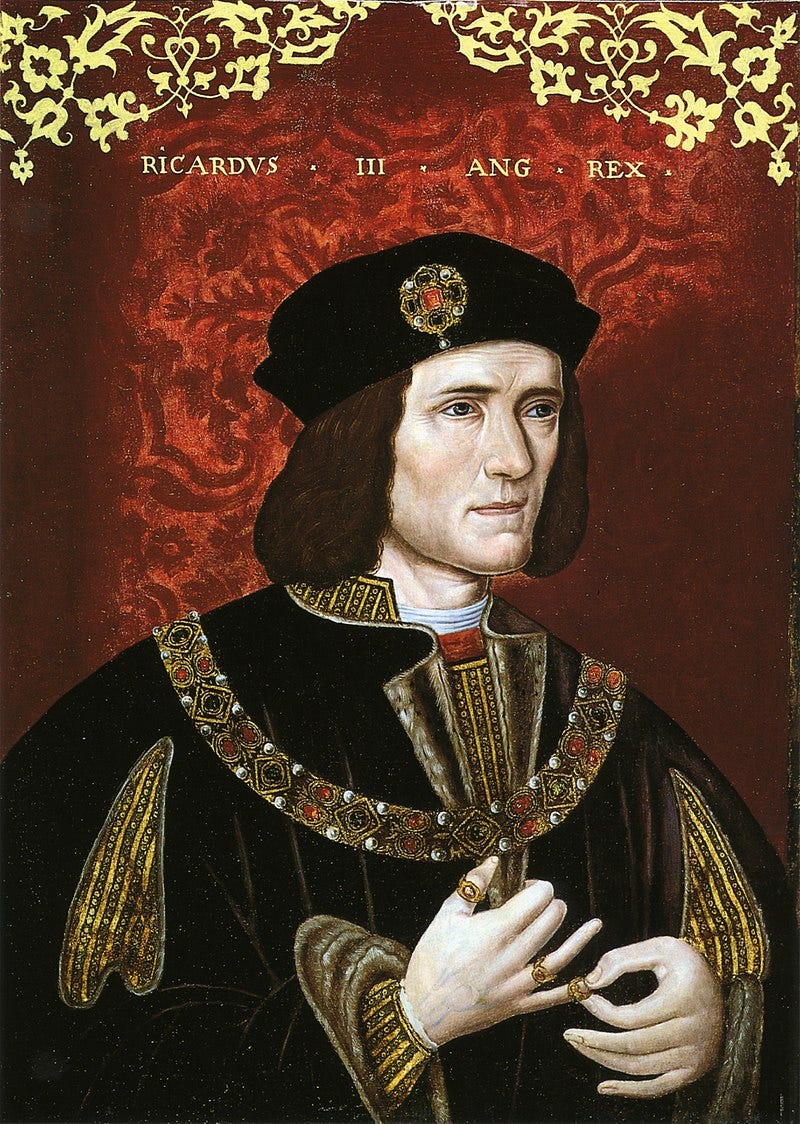This was a two-part report originally published at the time the news broke. A historic moment for the archaeologists and public alike!
King Richard III was the last English king to be killed in battle. He fought Henry Tudor in the Battle of Bosworth Field in 1485, where Henry triumphed. Richard's body was then buried in the Greyfriars Church in the English town of Leicester. That was all, for a time.
Then, miraculously, the bones of Richard III became the discovery of a lifetime - under a parking lot.
The monastery in which the king had been buried was dissolved and the church was demolished in 1536. Richard's remains were rumored to have been tossed into a nearby river, never to be seen again. Their whereabouts were one of the biggest historical mysteries in the world.
Philippa Langley, a screenwriter and researcher of Richard III, was convinced that Richard's grave had not been desecrated during the dissolution of the monastery. She proposed that he still lay where he had been buried, and she was correct.
Not satisfied with letting Richard's whereabouts go undiscovered, Langley teamed up with the archaeology department of the University of Leicester, the Richard III Society, and Leicester City Council to begin an archaeological study of the parking lot.
The team dug out trenches across the area, which revealed the remnants of the walls of the church cloisters. Discovered among the ruins was the complete skeleton of a human male with a severely curved spine and major head wounds, proof of having met a brutal enemy in battle.
The circumstances seemed to prove it was Richard, but how to know for sure? Michael Ibsen, a descendant of the king's sister, stepped forward to provide a DNA swab for testing. Another anonymous descendant did the same, and together they matched the DNA of the unearthed bones. At last, King Richard III had been found.

According to the press conference held in February 2013, royal historians and archaeologists are very fortunate to have made the discovery in this time period.
Geneticist Dr. Turi King says both the individuals who helped with the DNA analysis are "the last of their line" – so in a generation comparing DNA in this way would not have been possible.
DNA analysis of the remains was difficult, but they did manage to get a sample of DNA to work with. The DNA confirms this is a male.
She shows part of Michael Ibsen's DNA sequence ... there is a DNA match from the descendents of Richard III and the skeleton at Grey Friars.
The DNA evidence points to these being the remains of Richard III, she says.
Contemporary members of the Royal Family were amazed at the discovery. Prince Richard, the current Duke of Gloucester and the Queen's first cousin, also has a particular interest. He shares his Christian name with the king, who was also Duke of Gloucester before ascending the throne.
Upon the discovery of the king's bones, the Duke of Gloucester asked to meet with Dr. Philip Stone, chairman of the Richard III Society, of which the prince is patron. They met at the Duke's Kensington Palace home to discuss the find and the future. Prince Richard wants to see the remains buried with the dignity they deserve.
Part one originally published on Mandy On Monarchy on February 6, 2013.
Richard III Returns - Briefly
500 years have passed since King Richard III was killed during battle at Bosworth Field in 1485. He was buried in a monastery, but it had been destroyed long ago. The rumor persisted that his bones had been tossed into the nearby river and washed away forever.
Today the mystery has been put to rest and now, in the year 2015, the king gets a second burial. Richard III has been reinterred in Leicester Cathedral in a simple oak coffin after a procession and proper funeral.
It all began in 2012 when excavation was underway in a parking lot in Leicester, England. While digging, human bones were discovered by workers. Grisly, to say the least.
When it was discovered where they were digging, archaeologists raced to the site of the excavation to determine who had been buried. After removing the bones and reassembling them, they saw that the spine had a curve that attested to the real Richard, described in life as a “hunchback”.
After tracking down descendants of Richard’s sister, Anne, scientists took DNA from cheek cells to ascertain the identity of the bones. Could it be?
The monastery in which the king had been buried was dissolved and the church was demolished in 1536. Richard's remains were rumored to have been tossed into a nearby river, never to be seen again. Their whereabouts were one of the biggest historical mysteries in the world.
Philippa Langley, a screenwriter and researcher of Richard III, was convinced that Richard's grave had not been desecrated during the dissolution of the monastery. She proposed that he still lay where he had been buried, and she was correct.
After the tests returned, the announcement was made: the king had been found, five centuries after his death.
Wax replicas of the king have been made to recreate his likeness. A recent figure contends that Richard III was actually blond and blue-eyed. Excitement grew over the discovery and the plans to reinter the king. Unfortunately, as excitement grew so did arguments. Where should the king be buried? The towns of Leicester and York disputed the other’s claim over the king. After judicial review, it was settled that Leicester would be the home of the remains.
Today the king was carried back to Leicester in an emotional but dignified procession, a more pleasant and modern-day recreation of the journey the king’s body originally made from the battle site.

In a wonderful and touching conclusion to the king’s reburial, it has been revealed that Michael Ibsen, a descendant of Richard’s sister, has made the king’s coffin.
Canadian-born Ibsen is a cabinet-maker by trade. After providing DNA from a cheek swab to identify Richard, Isben helped make history. For his contribution, Isben was asked to be further involved in the process of Richard’s reburial by putting his skills to work making the king’s coffin. It is a high honor, indeed.
Says Isben: “"When you're working away you just focus on joining two bits of wood, but at the end of the day when you stand back and think 'I'm building Richard III's coffin,' it's incredible."
Related:
Richard III Reburial Celebration - LiveScience





